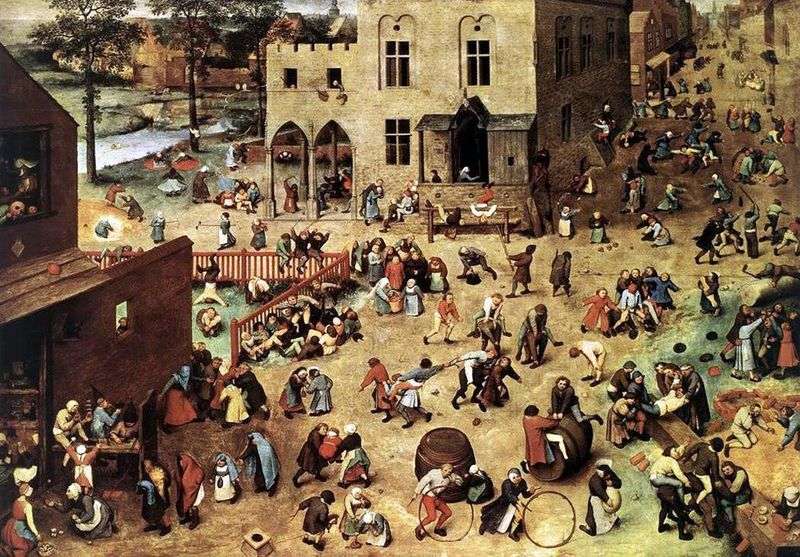
The painting was written by Brueghel in 1560. Subjectively and compositionally, she is close to such works by Brueghel as “Proverbs” and “The Battle of the Carnival and Fasting”, created a year earlier. They are united by the colorful and multi-figure composition, aspiration to the extremely detailed, exhaustive coverage of the chosen theme. N. A. Gershenzon-Chegodaeva notes that all three works are of an emphatically didactic nature; their basis is “the theme of the madness of human existence in the conditions of an” inverted world. “
Sandra Hindman notes that the tradition of depicting children’s games existed even before Brueghel, in the 15th century: this motif was often present on the fields of calendars and hour-books. It is very likely that Bruegel was familiar with such illustrations, but the spectrum of the games he portrays is much wider than that of his predecessors, and apparently has a slightly different symbolism.
The painting shows a city square; to the right of it the street goes to the depths, and on the left is a fragment of the landscape: several trees, a lawn and a small river. Everywhere we see groups of children engrossed in the game. Interestingly, different authors give different figures about their number: some indicate that the children in the picture are “over 230”, others – that they are “more than 250”. Jean-Pierre Vanden Branden in his work “Les Jeux d’enfants de Pierre Bruegel” refers to more specific figures: 168 boys and 78 girls. Different figures are given and relative to the number of games depicted by Brueghel: 83, 86, more than 90.
The participants in this mass stage are not united by any common action: they are divided into isolated groups that are indifferent to one another. Attention is drawn to the fact that there are very few children in Brueghel’s characters: they are portrayed rather like little adults. The idealization of childhood, which will become typical in the depiction of children in later centuries, was by no means practiced during the time of Brueghel: in childhood they saw only the stage of preparation for adulthood and were treated appropriately for children. The faces of children are devoid of individual characteristics and seem primitive and dull. No child smiles, their fun looks serious, focused.
Since children are depicted so unusual for us, it is difficult to say whether there are adults in the picture. Many researchers believe that Bruegel portrayed exclusively the children’s world; others admit that there are several adults in the picture.
In the composition of the painting, attention is drawn to an unusually high horizon and a shifted perspective, directing the viewer’s view to the right and into the depths.
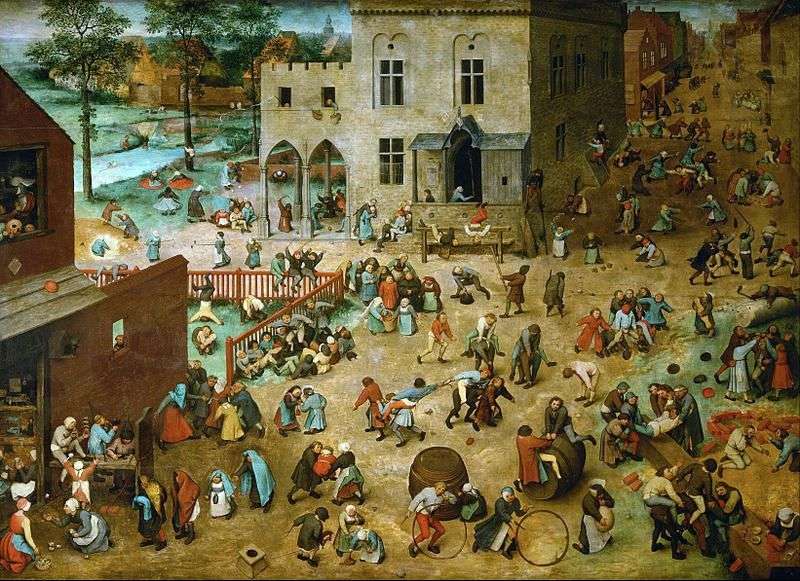 Kids Games by Peter Brueghel
Kids Games by Peter Brueghel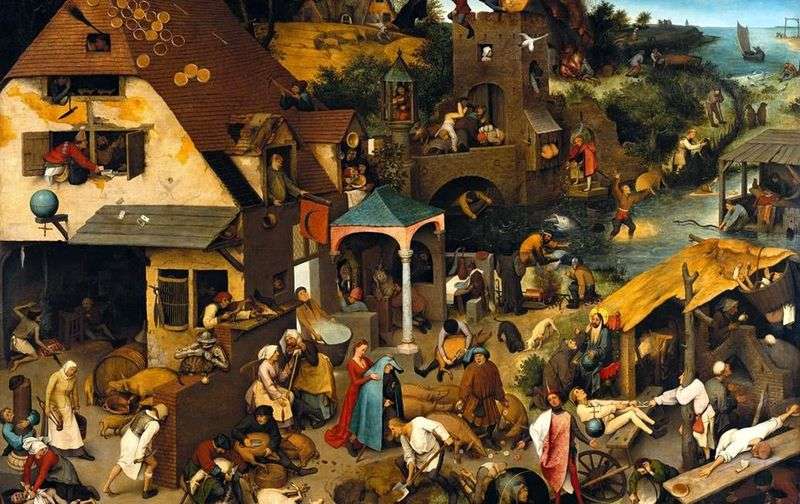 Dutch proverbs by Peter Brueghel
Dutch proverbs by Peter Brueghel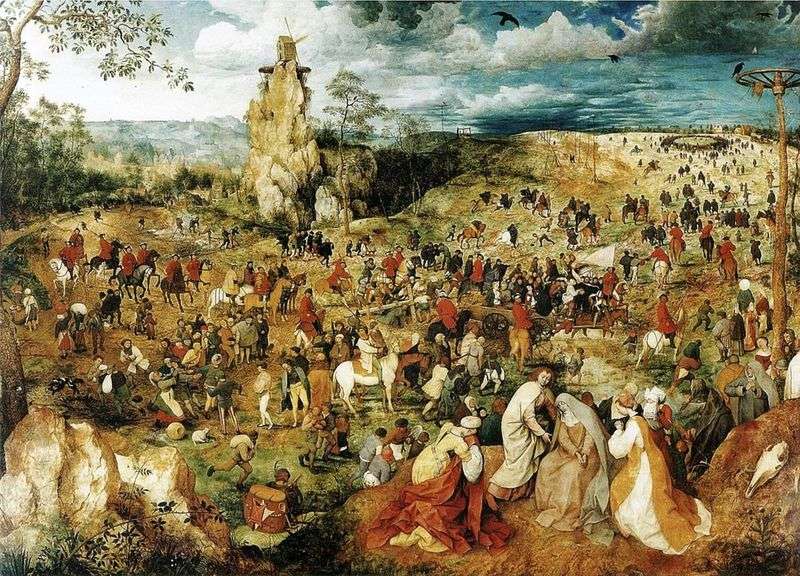 The Way to Calvary by Peter Brueghel
The Way to Calvary by Peter Brueghel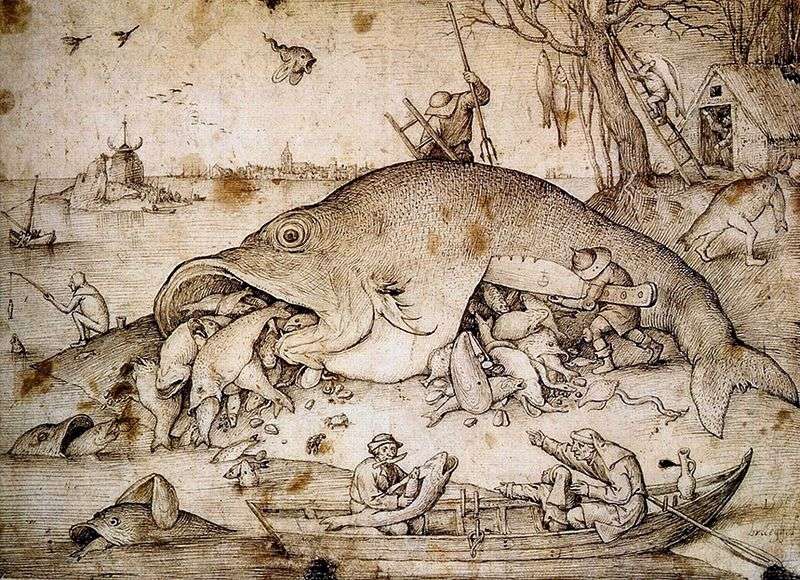 Big fish eat small by Peter Brueghel
Big fish eat small by Peter Brueghel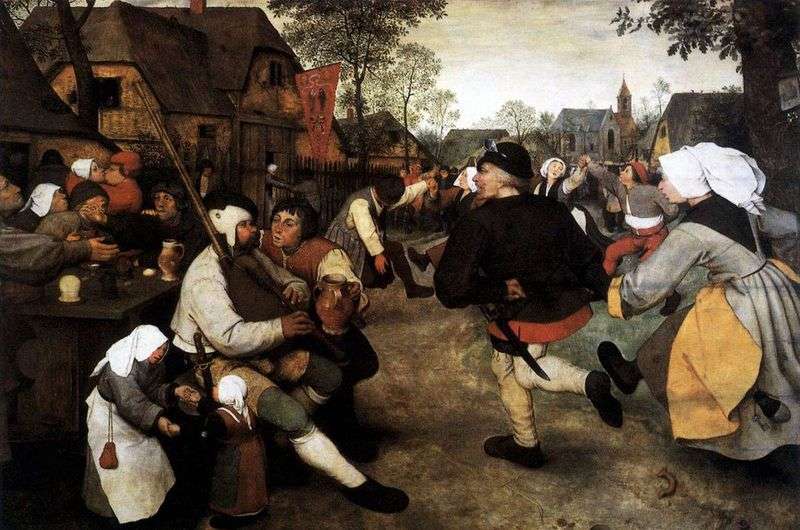 Peasant Dance by Peter Brueghel
Peasant Dance by Peter Brueghel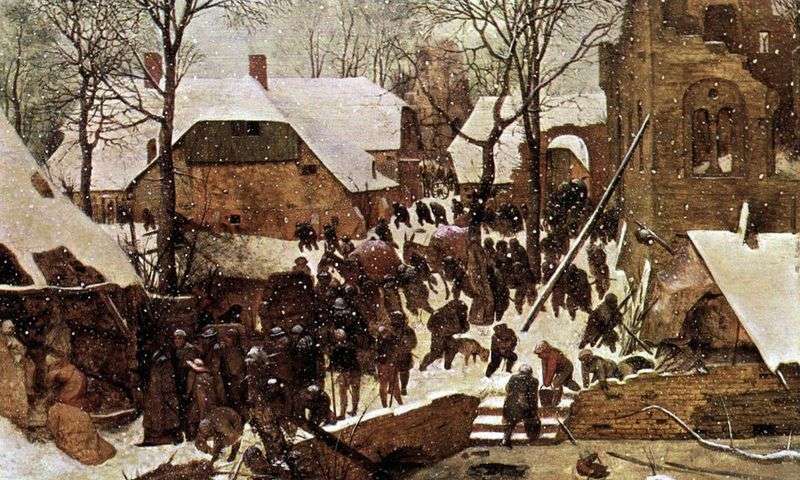 The Adoration of the Magi in the Winter Landscape by Peter Brueghel
The Adoration of the Magi in the Winter Landscape by Peter Brueghel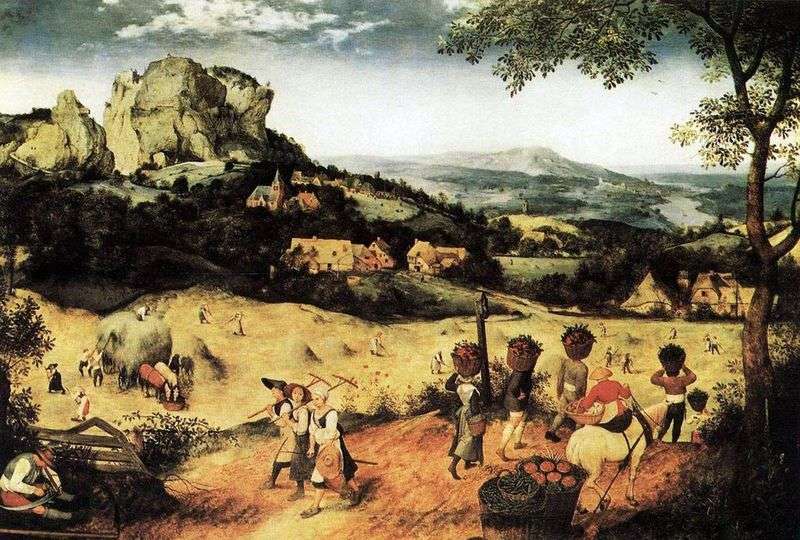 Haymaking by Peter Brueghel
Haymaking by Peter Brueghel The Parable of the Sower by Peter Brueghel
The Parable of the Sower by Peter Brueghel